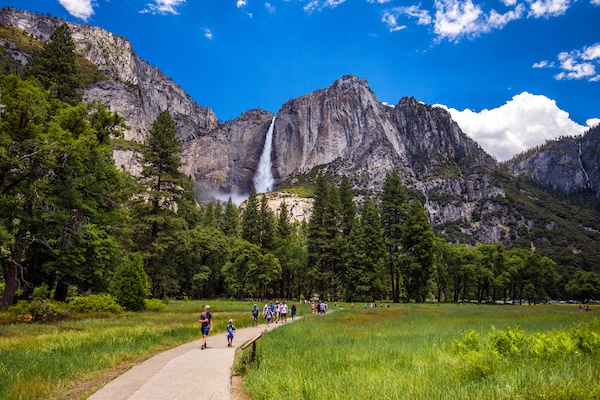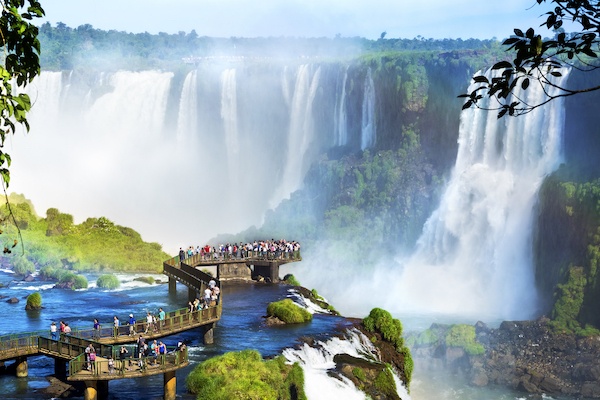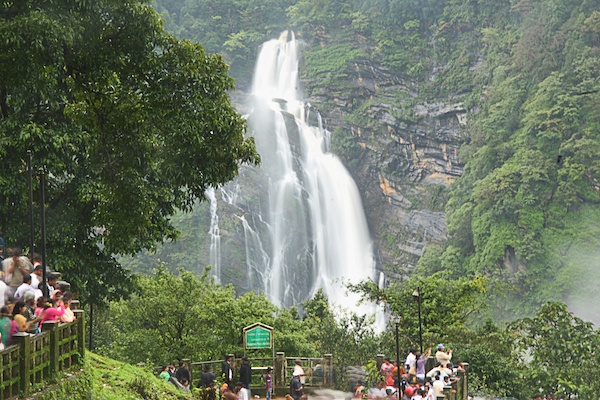It’s no debate; waterfalls are gorgeous. Whether it’s the small waterfall in the nearby neighborhood park or the huge, picturesque one you visited at Yosemite, there’s something uniquely charming about all waterfalls, and shooting them is often a boon for most landscape photographers.
Want to put your Micro 4:3 camera to good use and shoot waterfalls? Here’s a detailed guide covering popular waterfalls you should add to your photography bucket list, challenges to expect, and how to achieve a successful waterfall shoot with a micro four-thirds camera.
with a micro four-thirds camera.
Waterfall Hunting with the Micro 4:3 Camera: Top Waterfalls to Shoot
Whether you’re chasing waterfalls in North America or looking to get some great shots of a waterfall in Asia, you can never go wrong with a micro four-thirds system. This is essentially because some of the most beautiful waterfalls are often incredibly remote, and micro-four third cameras are so compact, they won’t add bulk to your photography kit.
are so compact, they won’t add bulk to your photography kit.
Besides the size factor, micro four-thirds also pack plenty of features (discussed herein) that make them suitable for the task. Check out some of the waterfalls you should consider shooting with your micro four-thirds:
1. Yosemite Falls

Yosemite National Park in North America is generally a photographer’s haven thanks to its beautiful and nearly infinite photography spots, including Yosemite Falls. The falls are more than 2,425 ft. and are considered among the tallest in North America.
The picturesque waterscape is actually three different falls : the Upper falls at 1430 ft, the middle cascades at about 675 ft, and the lower falls at 320 ft. While all three boast unrivaled natural beauty, the lower Yosemite falls offer the best shots because they perfectly blend in with the forest landscape.
: the Upper falls at 1430 ft, the middle cascades at about 675 ft, and the lower falls at 320 ft. While all three boast unrivaled natural beauty, the lower Yosemite falls offer the best shots because they perfectly blend in with the forest landscape.
The best time of the year to shoot Yosemite Falls using a micro four-thirds camera is in the fall. It’s usually less crowded, and landscapes all around serve as a beautiful golden backdrop against the already stunning waterfalls.
2. Iguazu Falls

Iguazu Falls is a spectacular waterscape perched where Brazil, Argentina, and Paraguay meet (three borders landmark ). The fall is incredibly dazzling and has up to 275 falls, spread over two miles, which is no wonder they’re considered a UNESCO World Heritage site.
). The fall is incredibly dazzling and has up to 275 falls, spread over two miles, which is no wonder they’re considered a UNESCO World Heritage site.
The highest falls cascade nearly 300 ft. below, leaving behind clouds of mist. It’s an all-year-round destination, but for the best shots and a hassle-free journey, visit Iguazu Falls in March or July when it’s least rainy.
3. Jog Falls

Whether you’re always chasing waterfalls, or this will be the first time, the landscape around Jog Falls will take your breath away. Also known as Gersoppa Falls , Jog Falls in Karnataka is about 253 ft. high and is the third-largest waterfall in South India.
, Jog Falls in Karnataka is about 253 ft. high and is the third-largest waterfall in South India.
The area generally offers excellent photography opportunities, and the best time to visit is during Indian monsoons when there’s plenty of water, and the landscape around is green and vibrant.
Common Challenges to Anticipate during Waterfall Photography
Even though waterfalls typically boast scenic vistas, capturing their allure is easier said than done. This is due to factors like:
- Location: as noted, waterfalls are generally remote, meaning accessing them might be pretty hectic, especially if you have lots of gear to carry
- Weather: waterfalls make captivating images, but capturing them is tricky because they don’t shoot well when it’s nice and sunny like other locations. They photograph well in overcast weather. The best shots of a waterfall are often achieved in between rain breaks, meaning you may have to pack up even rain-weather attire.
- Lighting: the large volume of fast-moving water in a waterfall makes achieving the perfect lighting for a shot with a micro four-thirds tricky. This is due to the constantly changing reflections. It becomes even more challenging when shooting a waterfall in the forest as light may bounce off trees, affecting the white balance.
- Limited camera positioning options: most waterfalls are often either fenced (Iguaza Falls above) or blocked by trees and other natural obstacles such as rocks. That makes positioning your camera tricky, which is why the Micro four-thirds comes in handy (it’s compact). Bring a tripod to make waterfall photography using it even easier.
Knowing these challenges to expect will help you better prepare for the task ahead with the micro four-thirds camera .
.
Tips for a Successful Waterfall Shoot Using a Micro Four-Thirds Camera
Maximize on the following tips for the best shot of Yosemite Falls or any other waterfall you’ll go chasing with a micro four-thirds camera:
1. Use Low Shutter Speed
Waterfalls are in motion indefinitely. On the one hand, this is great as it means you’ll never have to worry about missing a shot and can practice shooting as many times as you want to achieve the perfect image. On the other hand, the changing reflections can cause overexposure.
To capture the water motion and achieve smooth, realistic yet dreamy waterfall photographs of huge waterfalls like Yosemite falls using a micro four-thirds camera, switch to a low shutter speed, or use neutral density filters.
If shooting a smaller waterfall, or looking to capture images where the water appears frozen, go for long exposures with the appropriate shutter speed.
2. Maximize on in-Camera Stabilization
In-camera image stabilization is one of the best features of the micro four-thirds camera for waterfall photography. It auto-adjusts the image sensor based on your movement to eliminate shake and ensure high-quality shots.
is one of the best features of the micro four-thirds camera for waterfall photography. It auto-adjusts the image sensor based on your movement to eliminate shake and ensure high-quality shots.
It’s particularly a handy feature when shooting waterfalls since, as noted, you cannot use fast shutter speed, and you have limited camera positioning options.
3. Zoom-in with a Micro 4:3 Crop Function
Using a wide-angle lens to capture waterfalls makes them appear small. Luckily, one of the best features of the Micro 4:3 is its 2x crop factor. It automatically doubles the length of the telephoto lens, allowing you to zoom in and capture images of the waterfall without sacrificing quality.
is its 2x crop factor. It automatically doubles the length of the telephoto lens, allowing you to zoom in and capture images of the waterfall without sacrificing quality.
4. Make the Most of Focus Stacking
Focus stacking is yet another excellent feature to maximize when using a micro four-thirds camera to shoot waterfalls. It makes things a tad easier since you only have to choose a start and end focus point. The camera will automatically merge frames into one image, with better depth, resolution, and generally, outstanding quality.
Chasing Waterfalls with the Micro 4:3 Camera
The micro four-thirds camera is among the best things that ever happened to photography. It’s compact, durable, and comes in multiple model options meaning you’ll always find one that suits you. Hopefully, the tips above turn shooting waterfalls using your micro four-thirds an epic adventure.


